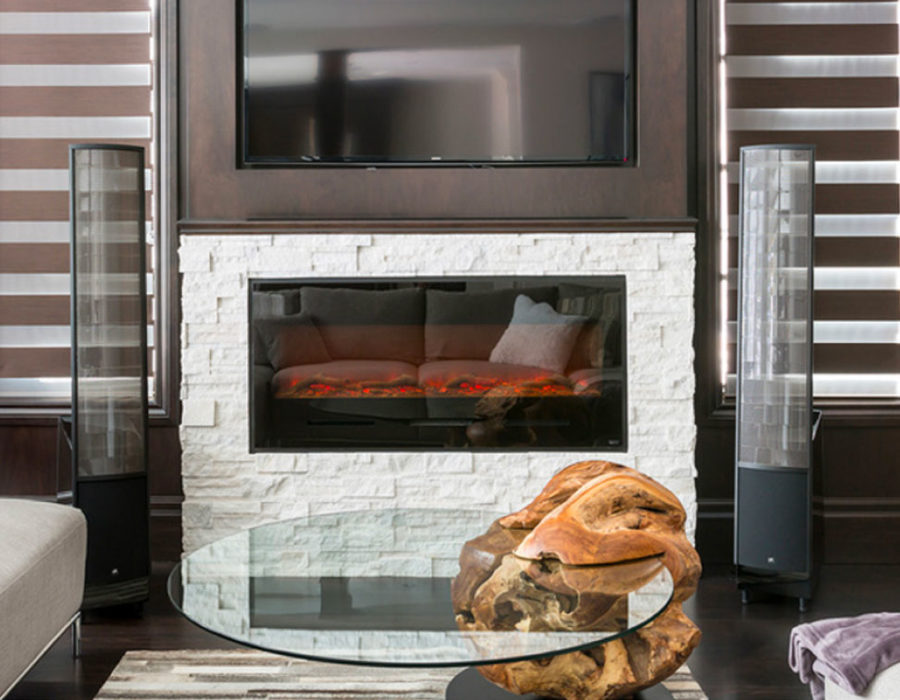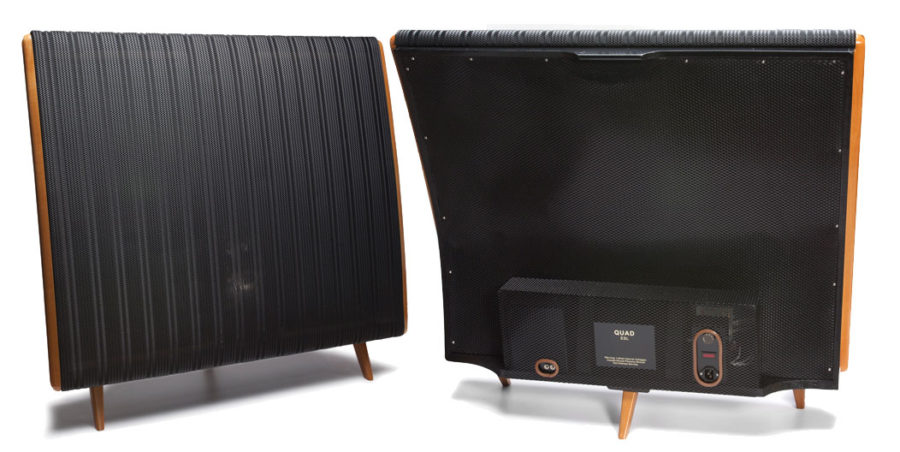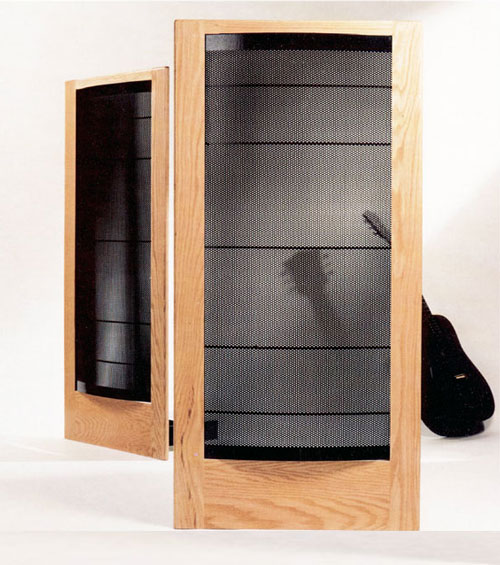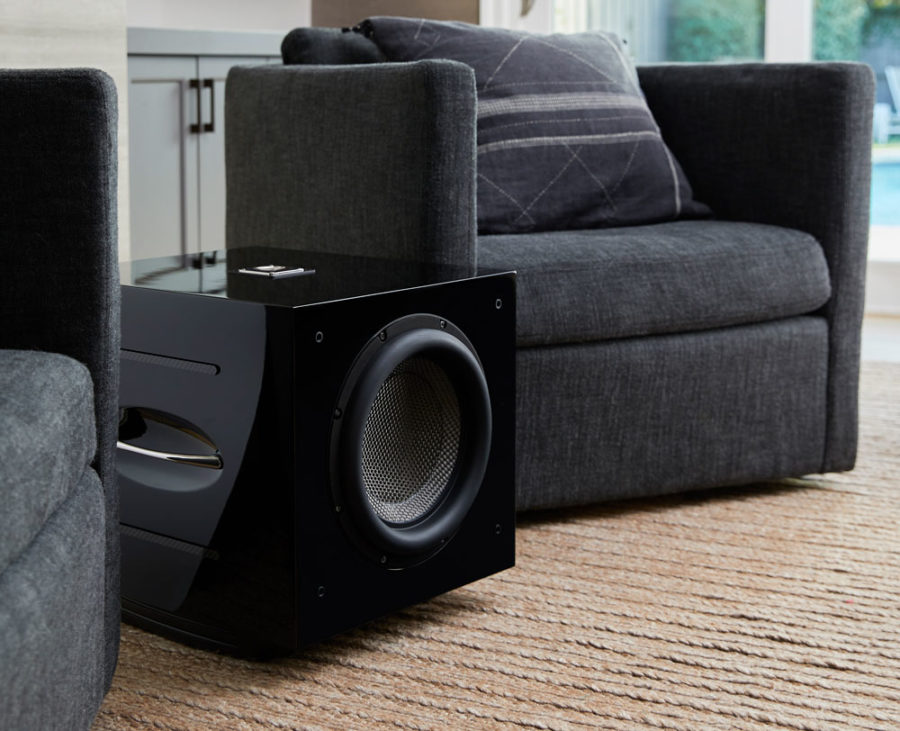Blog
Electrostatic Bass
REL & Electrostats, The Perfect Match

With less moving mass than the wing of a butterfly, perhaps the hardest test for any subwoofer is to ask it to pair with a special kind of speaker called an electrostat. This genre of speakers holds a special fascination for audiophiles because they come closest to the idea of a massless speaker, meaning one whose moving mass weighs almost nothing. As REL’s lead designer these past 16 years, I should know as I’ve owned a number of these light-as-a-feather miracles and dealt with all their weird little idiosyncratic behaviors.
I’ve owned 3 different pairs of original QUAD electrostats, likely the purest, most transparently natural mid-band of any production loudspeaker on earth ––and always will have at least one pair of these around. I also currently own a first-generation pair of Martin-Logan CLS, the next closest I have yet heard to the QUAD, but able to play significantly louder and also manages to deliver decent bass into the upper 50 Hz region without the cute little bump in the mid-bass the Quads always seem to have.

I’ve also used every pair of Quads since the ESL 63’s (too slow and dark sounding) and while I hear consistent improvements, they still don’t offer enough output to be meaningful for classic rock. And they’re still not close to the natural transparency of the originals nor some of the rare KLH 9’s I have heard on occasion. Frankly I’d rather know that the QUAD ESL’s (1957-1983) can’t play terribly loud but display amazing transparency and live within their limits than be told the new ones are so much louder only to find out they’re still not close to delivering satisfying output levels and lack the see-through qualities of the original.
So, when we say RELs are fast, we’re not just speaking theoretically, as in “our filters measure at X amount of group delay whilst other manufacturers of subwoofers deliver, at best X+80% greater delay” or some such twaddle. We mean that the REL Design Team routinely use electrostats during development to ensure that, above a certain price-to-performance range, we deliver tried and true solutions to the small but important clientele out there who own electrostats.

Our reasoning? Apart from the fabulously addictive sound electrostats deliver—once you’ve heard a good pair, it’s hard to go back—if we can build subs fast enough to keep up with these speed burners, conventional dynamic speakers hold no challenges on the speed front. More importantly, by designing for these torture-test speakers, it improves every aspect of performance including theatre. Ask yourself, how fast do we have to be to capture the shattering concussion of a grenade dropped (somewhat) close by?
So what are the characteristics necessary for a REL to be able to keep up with modern day Martin Logans, current QUADS, SoundLabs (Magnepans aren’t electrostats but we love ‘em anyway and will cover them in a future article) and the older classic ‘stats?
Don’t Hang Me Up: One quality, beyond pure speed is a clean finish without overhang. Many subs, their designers doubtless building these characteristics in an attempt to help them survive the mindless thrashing their marketing team drives, use heavy cones, super stiff suspensions and heavy/stiff surrounds. But this creates a style of sound that, while long on boom, is short on agility and the ability to recover quickly—the very qualities that so much interesting music relies upon and electrostats demand.
Electrostatic speakers, in part because their moving membrane is incredibly light and in part because they are energized over most of their surface, start and stop right NOW. When reviewers comment on REL’s abilities to produce dynamics, they aren’t using this term in the more common vernacular, meaning as shorthand for “they play really loud” (yes, of course, we deliver that in spades). Rather, dynamics refers to the soft-to-loud delta; it’s the ability to rapidly explode from soft to loud and back down to soft that is the most difficult act to perform in sub bass-ery.
Most conventional subs are so slow that they entirely miss the leading-edge snap of an explosion (or a well recorded kick drum head strike). Instead they produce a loud sound that when you carefully listen sounds like HOOOM (that’s only the middle portion of the bass event). They then can deliver essentially none of the echo and decay of that sound descending back down to momentary quietness.

In our development and testing process, we listen for EXACTLY those kinds of signatures and from Serie S models on up through our Reference models, we deliver that experience time and time again. And the new Serie T/x now has enough of the goods to easily partner with the various electrostatic hybrids that use conventional woofers in attached cabinets.
So, even if you don’t own electrostatic speakers yourself, the next time you see a pair in a store, may we suggest doing two things? First, ask for a demonstration, it’s well worth the experience if they’re well setup. And second, stop and take a moment and offer a silent “Thank you” to them, because without these amazing guides our design staff couldn’t deliver the supple, ridiculously quick bass experience that REL subwoofers offer. For us, they’re a critical component in our search to continue to evolve the subwoofer art.











